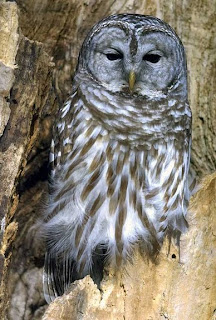Flocking summary
Form of advantage for flocking (and the type of group that benefits):
feeding efficiency
1. capturing difficult food flocks (pelicans)
2. flushing prey (cattle egrets)
3. efficient exploitation of indefensible food supplies (chickadees)
4. imitative foraging (chickadees)
5. information transfer (colonies and roosts)
anti-predator
1. "selfish herd effect" remaining in center reduces risk
2. increased vigilance--early warning
3. synchronous reproduction swamps predators
4. communal mobbing drives predator off
5. dilution effect--loss less of the total percent of prey population
6. confusion effect.
feeding efficiency
1. capturing difficult food flocks (pelicans)
2. flushing prey (cattle egrets)
3. efficient exploitation of indefensible food supplies (chickadees)
4. imitative foraging (chickadees)
5. information transfer (colonies and roosts)
anti-predator
1. "selfish herd effect" remaining in center reduces risk
2. increased vigilance--early warning
3. synchronous reproduction swamps predators
4. communal mobbing drives predator off
5. dilution effect--loss less of the total percent of prey population
6. confusion effect.
American White Pelican




Comments
Post a Comment